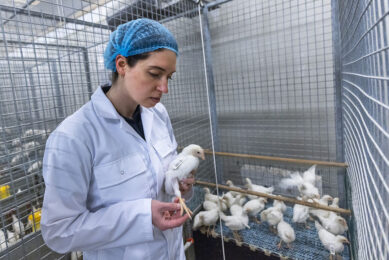Campylobacteriosis overtakes Salmonellosis

Campylobacteriosis has overtaken salmonellosis as the most reported animal infection transmitted to humans in the EU, according to the EFSA.
The second annual European Food Safety Authority (EFSA) report highlights that more attention is needed to tackle campylobacter.
The European Centre for Disease Prevention and Control (ECDC) provided the data on animal diseases that cross over to humans, known as zoonoses, and contributed to the analysis. The study was conducted on 24 EU countries and Norway, Iceland and Switzerland.
In the EU in 2005, there were 5,311 food borne outbreaks reported involving 47,251 people, resulting in 5,330 hospitalisations and 24 deaths.
In 2005, reported cases of campylobacter in humans increased 7.8% against the previous year rising to an incidence rate of 51.6 per 100,000 and a total of 197,363 recorded cases.
Eggs and broiler meat
Salmonella, campylobacter and viruses were the most important causes of reported food borne outbreaks in 2005. Broiler meat was an important source for salmonella and campylobacter outbreaks.
Salmonella, campylobacter and viruses were the most important causes of reported food borne outbreaks in 2005. Broiler meat was an important source for salmonella and campylobacter outbreaks.
The primary source of campylobacter infections in 2005 was linked to fresh poultry with up to 66% of some samples testing positive.
Salmonella infections fell by 9.5% in 2005 to an incidence rate of 38.2 cases per 100,000, with a total 176,395 reported cases.
Decreasing trend in salmonella
Reported salmonella was most often caused by fresh poultry and pig meat where proportions of positive samples up to 18% were detected. In table eggs, findings of positive samples ranged from 0 – 6%, but over the past five years an overall decreasing trend in occurrence of salmonella in eggs was observed. In animal populations, salmonella was most frequently detected in poultry flocks.
Reported salmonella was most often caused by fresh poultry and pig meat where proportions of positive samples up to 18% were detected. In table eggs, findings of positive samples ranged from 0 – 6%, but over the past five years an overall decreasing trend in occurrence of salmonella in eggs was observed. In animal populations, salmonella was most frequently detected in poultry flocks.













